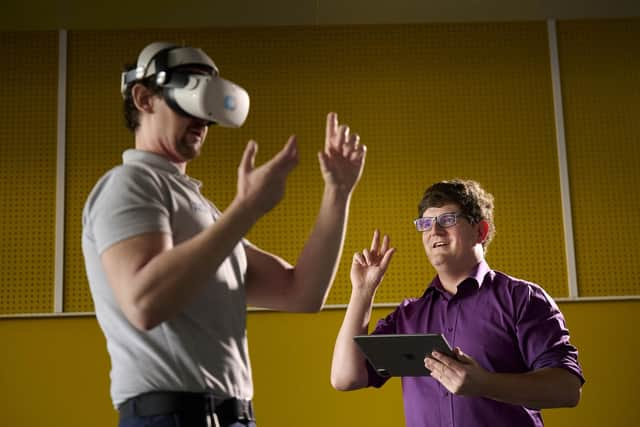Scottish university pioneers virtual reality technology to train student paramedics to deal with home birth
Student paramedics are using virtual reality (VR) technology at a Scottish university to prepare for life or death emergencies.
Queen Margaret University (QMU) in Edinburgh is leading the development of interactive programmes to help its paramedic science students test their decision-making skills under pressure, while building the confidence needed for the job.
Advertisement
Hide AdAdvertisement
Hide AdThrough a VR headset, students can be immediately transported into a variety of environments, which any paramedic could face. Lecturers lead students through a simulation, taking them in a flash into a bedroom of a modern flat where a young woman is suffering labour complications, for example.


Students interact with patients by observing, asking questions, using equipment and processing information in a virtual situation. They have the chance to make mistakes, learn to navigate situations and correct their actions in a safe space.
Alexander Williams, a paramedic lecturer at Queen Margaret University, who led the VR project alongside commercial partner Virtual Reality Empathy Platform Ltd, said: “It’s not only an exciting way to learn, it’s the perfect training ground for a paramedic student.
"It helps to improve the learning experience and patient safety. By supporting students through different patient scenarios, we are allowing them to learn at a pace that’s right for them and to build their understanding of different environments that paramedics work in.
"They also get to feel the stress that can be involved in certain situations, but to experience that in the safety of the virtual classroom.”
He added: “While VR is now used in some areas of education, this is the first VR programme which focuses on real-time decision-making in relation to maternity complications, rather than just skills development.”
Lisa Fernie, a second year paramedic science student at QMU, used the technology with guidance from her lecturer.
She said: “I was totally amazed at how immersive and realistic the experience felt. It was so exciting, as I’d never used VR technology before. It adds a different dimension to our learning process and is particularly helpful to those of us who are visual learners.
Advertisement
Hide AdAdvertisement
Hide Ad"Using VR alongside skills classes will help to strengthen muscle memory, making us more confident and competent in dealing with different types of scenarios – some of which we may not come across on a regular basis, but which could be life and death situations in the real world.”
Another student, Bronte Haywood, said: “The first time I experienced the VR package, it was slightly disorienting because it was so real and I got so invested in the scenario that when someone spoke to me outside the VR headset, I got a fright.
"Being in the scenario gave me the feeling of actually being in a patient’s house – needing to be spatially aware, learning to communicate with the patient, and being aware of the pressure of what could happen next.”
QMU developed the VR packages, working with Virtual Reality Empathy Platform, software developer Visual Lane, Age Concern and Age Scotland. The team is keen to develop it for a wider range of students and professionals.
It is one of a number of areas where QMU is innovating. The Scotsman recently visited to hear about the way it is encouraging the next generation of teachers to take their classes outdoors.
Comments
Want to join the conversation? Please or to comment on this article.
